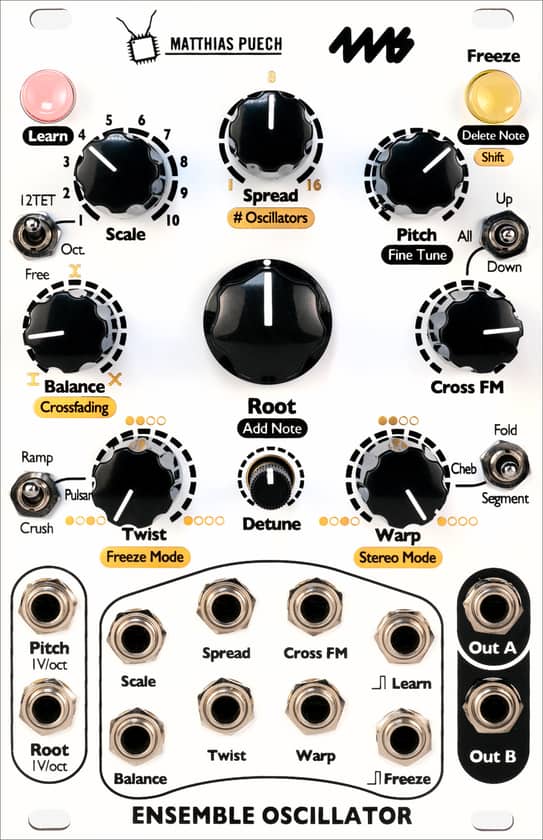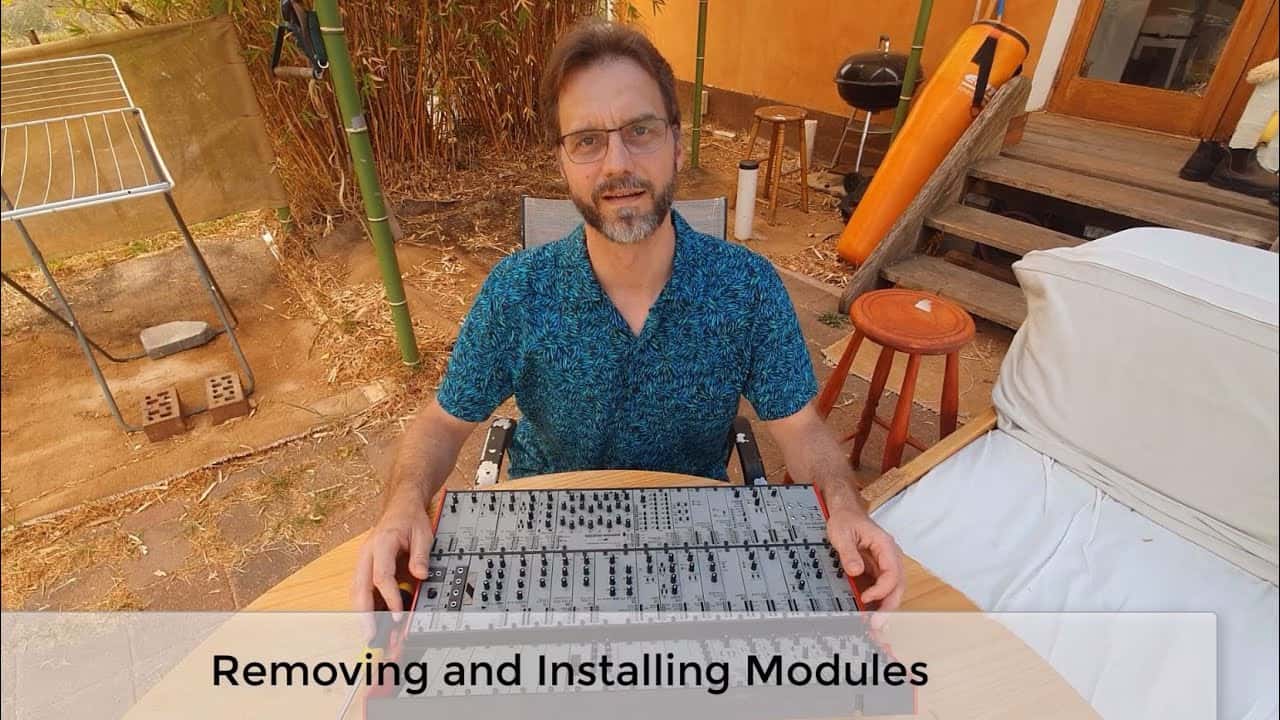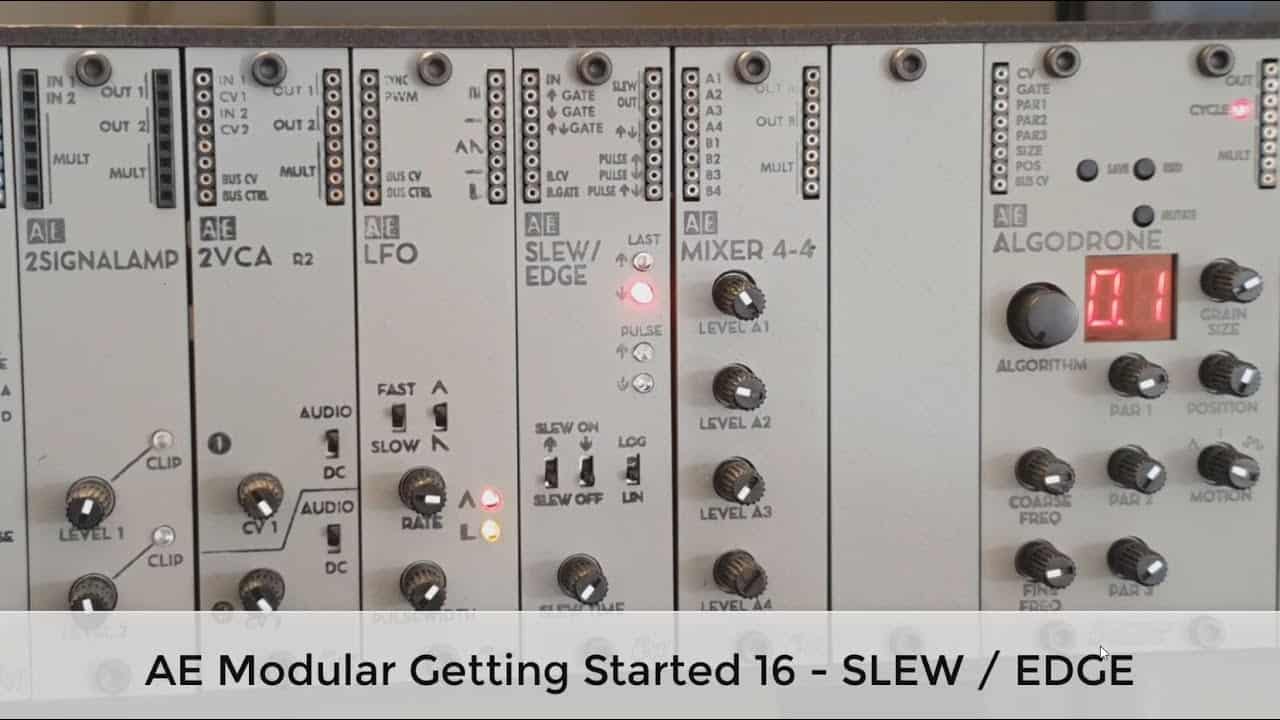4ms Ensemble Oscillator Available in Stores
The Ensemble Oscillator is a unified polyphonic voice of sixteen complex oscillators combining additive, FM, phase-distortion, and wave folding synthesis techniques in new unorthodox ways. The Ensemble Oscillator was designed by Matthias Puech and 4ms Company.
When does the superposition of tones produced by well-coordinated instruments become a single voice with a complex timbre subtly evolving over time? What are the boundaries between a rich timbre and a musically harmonic chord? From traditional overtone singing techniques and Gregorian chants to Spectral Music, Helmholtz’ resonators to modern-day Fourier theory, or classical counterpoint to Xenakis’ massive polyphonic clusters, the rich spectrum lying on the limit of these perceptual illusions has been a constant source of fascination, scientific study, and artistic inspiration.

By quantizing the oscillators to scales or series of harmonics, the Ensemble Oscillator allows you to explore the sonic boundary between musical chords and rich evolving textures.

Combining additive, FM, phase-distortion, and wave folding synthesis techniques in new unorthodox ways, the Ensemble Oscillator allows you to explore this sonic boundary and exploit it musically. The eurorack-format module is a unified polyphonic voice of sixteen complex oscillators sharing the same sine-based waveforms. The oscillators take their frequency relationships from a selected scale, crossfading smoothly from one note to the next. The Ensemble Oscillator easily creates a wide variety of sounds ranging from aggregates of pure sine waves to pulsar synthesis or pristine harmonic
tones and lush wide chords to rich dirty drones and rumbling glitches. Custom scales can quickly be “learned” and saved using a CV keyboard or by manually entering notes with the controls.

4ms Ensemble Oscillator Features
- 16 sine-based oscillators bound to intervals of a selected Scale
- 30 factory-programmed, user-writeable scales organized in three groups:
- 12TET: all notes quantized to equal temperament, repeating over octaves
- Octave: unquantized notes, repeating over octaves
- Free: unquantized notes, repeating over the interval between the lowest and highest note
- A simple method to program (“Learn”) your own scales manually or with a CV/Gate keyboard
- Three Twist phase distortion effects
- Three Warp wave distortion effects
- Three algorithms of Cross FM for modulating the oscillators with each other
- Mono or stereo output with selectable panning algorithm
- Freeze button and jack to freeze the frequency of some of the oscillators, with a selectable algorithm
- Two 1V/oct inputs: Pitch (Non-quantized), and Root (quantized)
- High-accuracy, temperature-stable, eight-octave range (-2V to +6V), can be calibrated to any keyboard
- Six bi-polar CV inputs (-5V to +5V)
- Two gate inputs for automated Learning and Freezing
Ensemble Oscillator – Oscillators and Frequency
The Ensemble Oscillator has sixteen oscillators. The pitch of each oscillator is quantized to the current scale. Root and Spread adjust the frequencies before quantization to the scale; Pitch and Detune adjust the frequencies after quantization. If an oscillator’s frequency before quantization is in between two notes of the current scale, then both notes will be heard. The volume of each note will depend on how close it is to the oscillator’s frequency before quantization, i.e. we crossfade between notes instead of jumping from one to the next. Once this process of quantization and blending of notes is done, the post-quantization frequency controls are applied (Pitch and Detune).
The waveshape of each oscillator is a sine wave by default. Twist and Warp modify the waveshape using a variety of algorithms, resulting in rich harmonics and complex timbres. Cross FM applies frequency modulation (FM) to the oscillators. The switches next to these three knobs select the algorithm used. The oscillators output in stereo to the Out A and Out B jacks. To use the module in mono, just patch into the Out A jack;
both outputs will be summed into it.
Ensemble Oscillator – Scales
The currently selected scale determines which pitches the oscillators are allowed to take. A scale can be thought of as a series of notes. In the Ensemble Oscillator, the notes can be spaced by any amount, not necessarily just by half-steps, whole-steps, etc. like in western music scales. Also, the range of each scale can be any amount, not necessarily just an octave like most traditional scales.
Sometimes when using the Ensemble Oscillator, it’s useful to think of a scale as a series of harmonics rather than a series of notes. The difference is purely perceptual: when many notes are played at the same time you perceive a chord, but when many harmonics are played at once, you perceive a rich waveform. If you’re not familiar with the concept of a harmonic, or that any waveform can be created by adding sine waves together, the Scales and Oscillators section (page 11) has more details.
Availability
The module 4ms Ensemble Oscillator is available for example here at Signals Sounds.










